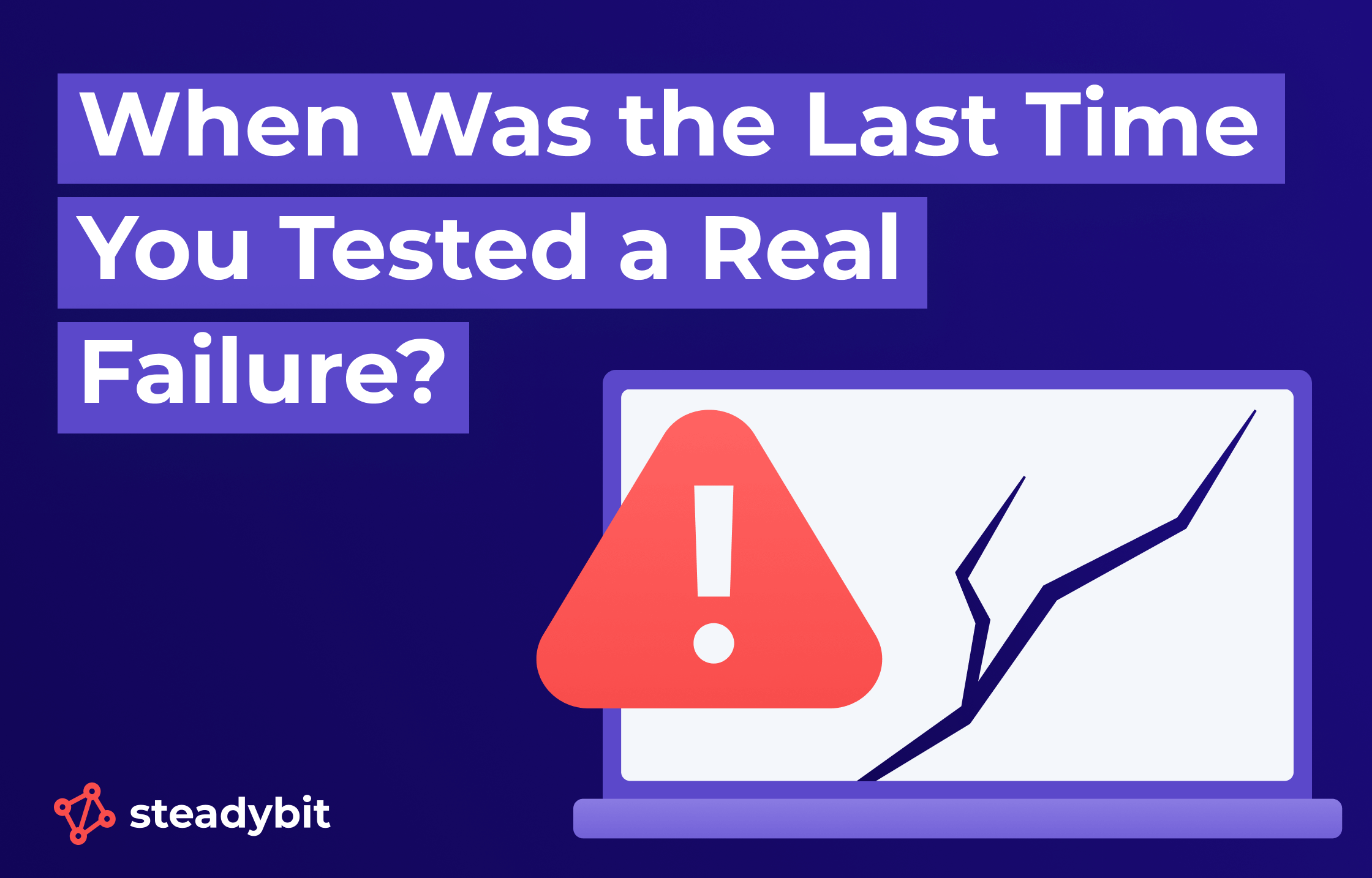When Was the Last Time You Tested a Real Failure?

If your last chaos experiment was months ago, you’re relying on hope that your systems will stay up and running in production. Hope is not a resilience strategy.
When you avoid this kind of testing, you are quietly accumulating reliability risks in your systems and accepting the cost of resulting outages. Teams often become complacent and fall into comfortable routines after extended periods without incidents. But beneath the calm surface, hidden risks quietly multiply.
Think about the 1996 Ariane 5 rocket disaster. Engineers confidently reused proven software from Ariane 4 without thoroughly stress-testing it for new flight conditions. Just 37 seconds post-launch, this assumption cost billions, starkly demonstrating what happens when testing real failure scenarios is neglected.
Boeing’s 737 Max tragedies paint a similar picture. Insufficient scrutiny of the Maneuvering Characteristics Augmentation System (MCAS) software allowed critical issues to linger unseen, leading directly to two catastrophic crashes. This highlights how essential ongoing, realistic failure testing is to uncover hidden threats.
These events aren’t isolated anomalies. They vividly illustrate how relying on past stability instead of actively seeking vulnerabilities leads to disastrous outcomes.
At Steadybit, we advocate for testing under genuine failure conditions to uncover the unknown vulnerabilities lurking beneath perceived stability. Systems might look solid day-to-day, yet subtle, overlooked dependencies surface dramatically under realistic failure scenarios.
Real failures don’t fit neatly into simulations. They are unpredictable, chaotic, and complex. Designing chaos experiments grounded in actual outages or realistic simulations allows teams to uncover critical vulnerabilities like insufficient redundancies, weak fallbacks, or vulnerable critical paths. These experiments spark deeper discussions on system resilience, architectural choices, and organizational risk acceptance.
Regular failure testing cultivates an engineering culture rooted deeply in preparedness and proactivity. Teams consistently exposed to failure scenarios build instinctual responses. They gain experience not only in reacting quickly but in recognizing and mitigating potential points of failure before they escalate into significant issues.
Building resilience demands sustained effort. It requires actively probing your systems to expose vulnerabilities early, preventing disruptive surprises later.
Reflect honestly: when was the last time your team faced a realistic failure test? If the answer isn’t recent, your next outage is not a question of if, but when. Engage with failures now before you’re forced to confront them on someone else’s terms.
Want more? Listen to this recent talk on the topic of proactive reliability in our podcast, Experiments in Chaos.
Why Many Teams Struggle to Switch to a Proactive Reliability Approach | Experiments in Chaos